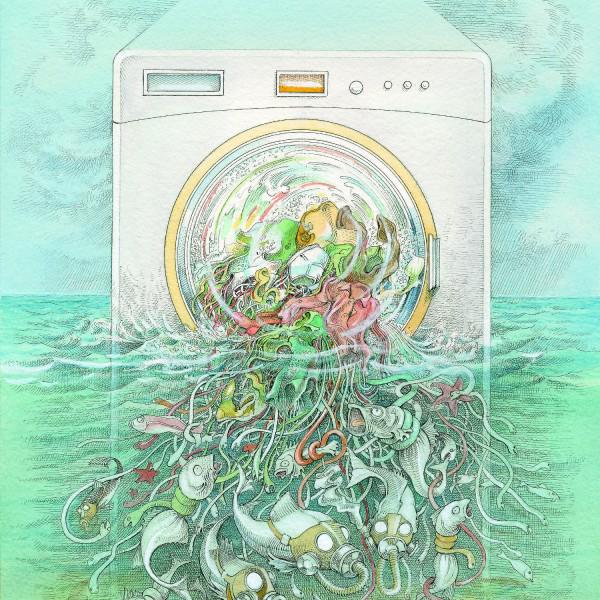Microfibres | how much is in your wardrobe?
Published on 10 October 2024

Microfibers
Taking the Plastic Free July challenge into your closet? Did you know that man-made materials like polyester, nylon and acrylic are made up of teeny, tiny particles of plastic called microfibers? Whilst a wardrobe entirely without these materials is unrealistic (hello, I need my activewear!), choosing how we wash and care for these types of clothing can make a big difference to how many of these microfibers end up in the water stream.
Microfibers are micro-plastics which are smaller than 1mm in size, and shed from our clothes. When clothes made from synthetic materials are washed, these tiny microfibers are shed, and washed down the drain with the water from the washing machine. They then begin their journey out to sea, where unfortunately fish and other animals are eating them, thus they are entering the food chain, which we are a part of! Believe it or not, one third of micro plastics found in the ocean actually come from our clothes!
What can you do?
Only wash your clothes when they need it, on a gentle setting, and in cold water. Save water and power at the same time by waiting for a full load and avoiding the clothes dryer! The less heat and friction the clothes are exposed to the fewer fibers they will shed.
You can also purchase bags online (i.e.the Guppie bag) that help to reduce synthetic microfibers being polluted into the ocean during a wash. To use these bags simply place your dirty clothing in the bag and pop it in the wash as normal. After the wash remove the microfibers that accumulate within the bag. These microfibers can be disposed of in the red bin.
Another option is to install a microfiber filtration system on your washing machine’s water output. This will also collect the microfibers from your clothing. There are a variety of options to purchase online, remember to check the reviews first!
By adopting these practices we can reduce our household pollution and better care for the ocean and the creatures that live within it.